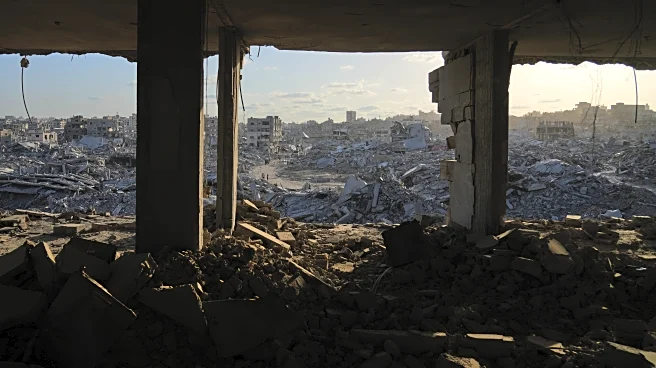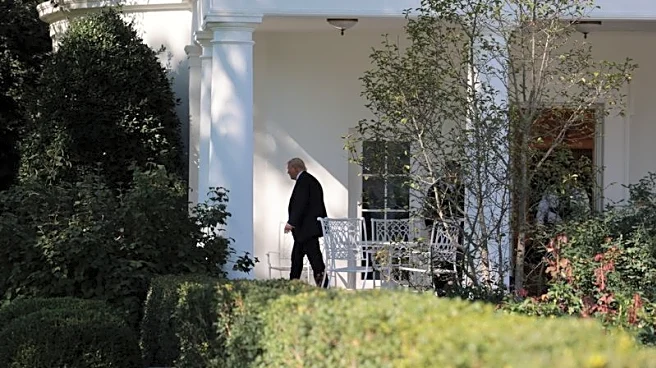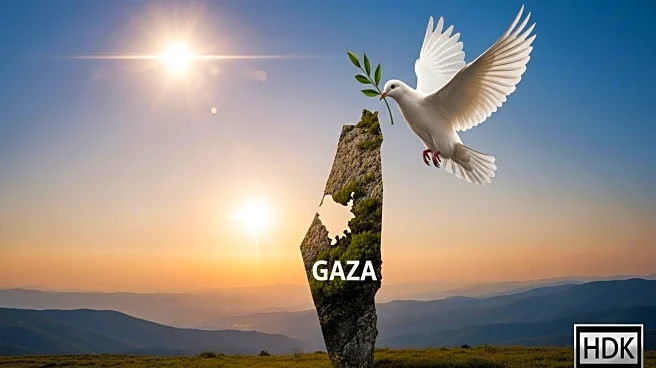What's Happening?
President Trump has successfully brokered a ceasefire agreement between Israel and Hamas, leading to the anticipated release of 20 Israeli hostages held in Gaza. The ceasefire, which took effect on Friday, has allowed approximately 200,000 people to return to northern Gaza, despite the extensive destruction caused by the conflict. The agreement includes the exchange of hostages and the release of nearly 2,000 Palestinian detainees by Israel. President Trump is expected to arrive in Israel to address the Israeli Parliament and meet with the families of the hostages. He will then travel to Egypt to co-host a peace summit with Egyptian President Abdel Fattah El-Sisi.
Why It's Important?
The ceasefire marks a significant step towards ending the two-year conflict between Israel and Hamas, which has resulted in substantial loss of life and destruction in Gaza. The release of hostages and detainees is a critical component of the agreement, potentially easing tensions and paving the way for further diplomatic efforts. President Trump's involvement underscores the United States' role in facilitating peace in the region, with implications for U.S. foreign policy and its relationships with Middle Eastern countries. The reopening of the Rafah border crossing for aid delivery is crucial for addressing the humanitarian crisis in Gaza.
What's Next?
The ceasefire is just the beginning of a complex process that requires ensuring Hamas is no longer a threat and determining governance and reconstruction plans for Gaza. The upcoming summit in Egypt aims to further these discussions, although the establishment of a Palestinian state remains uncertain. The U.S. will continue to play a role in coordinating military and humanitarian efforts, with 200 military personnel set to assist in logistics and engineering tasks. The international community will closely monitor the situation, as the ceasefire's success could influence broader peace initiatives in the region.













